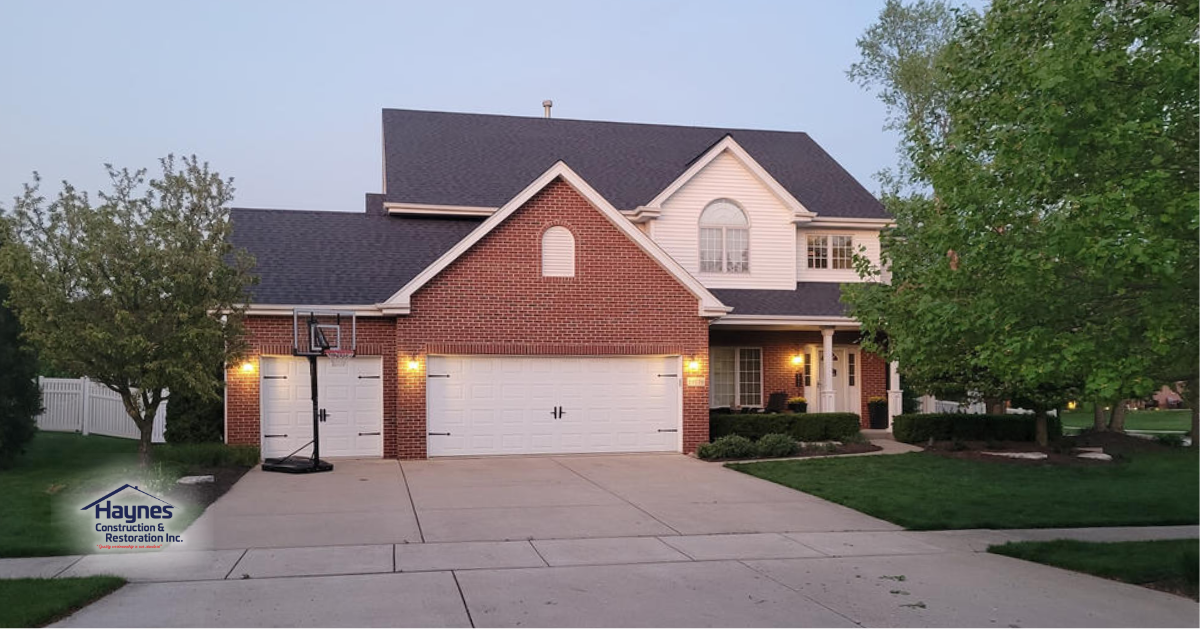New roof over your head? Check out these 8 roof maintenance tips to help you make sure your roof is in peak condition year-round.
1. Keep Your Gutters Clean
Each season brings with it debris that can end up in your gutters. Making sure that your gutters are clean and free of blockages all year is important to residential roof maintenance. If water can’t flow freely down your gutters and away from your home, it can cause a whole lot of trouble, from your basement to your ceiling.
Roof decking rot caused by gutter backup is an easy thing to prevent with this simple roof maintenance tip. Get up on a ladder every now and again or call a professional gutter cleaning service to clear out any obstructions.
2. Trim Back Trees and Landscaping
While tree limbs close to your home can make for a picturesque landscape, they can cause some ugly problems. Limbs and branches knocked loose during a storm can cause immediate damage to your roof and provide easy access for squirrels and other critters to invade your home. One of the best tips for how to maintain a roof is to clear away any threatening branches.
As tree branches and other landscaping starts growing a little too close to your home or roof, trim it back a few feet to make sure it won’t cause any issues during a sudden bout of bad weather. You also want to make sure shrubs and other ground landscaping allows enough space for your gutters to properly drain water away from your home to prevent damage to your foundation.
3. Remove Snow From Your Roof
Snow can be fun to play in, but a significant buildup of snow on your roof creates a not-so-fun situation. If you have an older, shabbier roof, a heavy amount of snow sitting on your roof can lead to the possibility of roof collapse.
To remove snow from your roof, carefully scrape away whatever snow you can reach with a snow rake. This will help relieve the weight of the snow on your roof and minimize the chance of roof collapse.
4. Check for Cracked or Missing Shingles
Summer weather can really take its toll on your roof. Excessive temperatures can sometimes cause the shingles on your roof to shrink or crack, and extreme summer storms can tear them off your roof altogether.
While LONG roofs are built to last for years to come, severe summer weather, like hurricanes and tropical storms, can be strong enough to damage even the strongest roofing systems. Taking a few minutes to inspect your roof from the ground can help you identify any areas where shingles may be missing or damaged.
Additionally, calling in a professional to inspect your roof can help you get ahead of possible damage down the line.
5. Remove Moss and Mold
Algae, moss, and mold spores are easily carried by the wind and can spread from one rooftop to another. While algae doesn’t tend to do a lot of damage to asphalt roofing, moss and mold can be detrimental. Both moss and mold thrive in areas of moisture, so if you spot these on your roof then you may have a leak or an area where moisture is collecting.
Additionally, moss can lead to curling asphalt shingles, increasing the likelihood of losing shingles in bad weather and allowing moisture to penetrate other layers of the roofing system. Mold can decay the structure of your roof and cause severe, expensive damage. It’s important to get rid of any moss and mold as soon as possible.
Try spraying any mossy, moldy areas of your roof with a liquid chlorine bleach and water mixture, allow it to sit for 15 minutes to a half hour, and then power wash it off. Take precautions to properly direct the run-off to protect any landscaping on the ground below.
6. Look for Leaks in the Attic and Ceiling
While a visual inspection on the exterior of your roof will tell you a lot about your roof’s health, you might not be able to spot leaks or infiltrations from the outside.
When going through your regular residential roof maintenance, be sure to take an extra few minutes to inspect your ceilings, especially in the attic. Look for any moisture or signs of water damage.
If you see signs of water damage, call a professional roofer to inspect and resolve the issue before any severe damage is done.
7. Ensure Strong Insulation
Poorly insulated roofs can cause a home to lose up to a quarter of its heat. Fitting your attic, loft, or roof space with proper insulation will help you save on energy costs while keeping your home at a comfortable temperature.
When installed properly, roofing insulation can last more than 40 years, meaning it will more than pay for itself in energy bill savings while also reducing your carbon footprint and keeping your home more comfortable along the way.
8. Get a Roof Inspection
One of the best roof maintenance tips is to call in a professional roofer to examine your roof and give it a thorough roof inspection. As a homeowner, there are plenty of roof maintenance chores you can do yourself to protect your roof and increase its lifespan, but you may miss signs of damage or decay that a professional will spot right away.
If you want your roof to last as long as possible and stay in good-looking shape, consider scheduling a roof inspection once or twice per year, or after severe storms.
Haynes Construction has been in business for over 40 years. That means we’ve seen it all — and fixed it all! And we're here to help you with it all!






